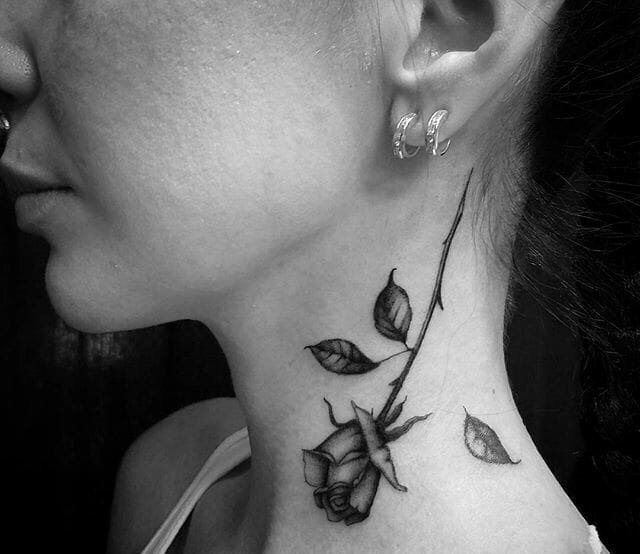The surprising history of women’s tattoos
令人惊讶的女性纹身史
QUICK TAKE
速览
250 words
CIRCUSES AND SIDESHOWS MAY NOT SEEM like obvious places to look for stories of female empowerment, but experts say the performers who appeared in such acts played a surprising and important role in women’s history—in large part thanks to their tattoos.
马戏团与杂耍表演看上去似乎不像是那些明显可以找到女性赋权故事的地方,但是专家说那些出现在这些表演中的演员在女性历史中起了一个令人惊讶和重要的作用--在很大程度上是由于她们的纹身。
The height of sideshow and circus popularity in the mid–19th century came at a time when women had few opportunities for economic independence, and providing for families was largely a man’s job.
马戏团与杂耍在十九世纪中期达到了一个高峰,而此时女性在经济独立上却鲜有机会,供养家庭很大程度上是男人的工作。
Not so for the female sideshow performers, many of whom capitalized on the fascination with body art by voluntarily tattooing themselves, enabling them to make their own money. (Though some were forcibly tattooed.)
但是对于女性杂耍演员而言,她们中的许多人自愿纹身来通过身体的魅力去赚钱。(尽管一些是被强迫纹身的。)
Ink liberated Victorian-era women outside the circus as well.
油墨使得维多利亚时代的马戏团之外的女性也能够得到自由。
Wealthy socialites, for example, got tattoos as a form of rebellion.
比如,对于富裕阶层而言,纹身被视为一种叛逆的形式。
At the time, social mores required these women to keep their whole bodies covered.
在那个时代,社会传统习俗要求这些女性将她们的整个身体都被覆盖住。
And so—influenced by tattooed British royals—they started summoning ink artists to their homes to give them designs they could hide.
因此,那些被纹身风气所影响的英国王室成员,他们开始召集纹身艺术家去他们的私宅提供那些能被隐藏起来的设计。
Winston Churchill’s mother Lady Randolph Churchill is said to have had a snake tattoo on her wrist (easily covered by a wineglass or sleeve); by the turn of the 20th century, roughly threefourths of fashionable New York City ladies had gotten similarly trendy tattoos, including butterflies, flowers and dragons, according to the New York World.
据说温斯顿·丘吉尔的母亲兰多夫丘吉尔女士在她的手腕处曾有过一个蛇形纹身, 这很容易被酒杯或者袖子所遮住。据《纽约世界》报道: 到了二十世纪的初期,大概有3/4的纽约新潮女郎都已经有了相似流行的纹身,包括蝴蝶、花和龙。
As Cristian Petru Panaite, curator of an exhibit on the 300-year history of tattooing, open now at the New-York Historical Society, puts it, “Tattoos were an early way that women took control of their bodies.”
就如 Cristian Petru Panaite,三百年纹身史展览的管理人,正在纽约历史协会图书馆开幕式上所言的:“纹身是女性早期控制他们身体的一种途径。"
一句话点评:女性的觉醒正如纹身史一般,从控制她们自己的身体开始。而如今,被观看的慢慢转变为男性。
送给妇女节:
赠予被忽略的女性权利日,请不要把平权简单过成用金钱可以购买的情人节。
如果妇女节的意义就是男性向女性谄媚,尤其是以金钱和礼物这样粗暴的手段来展现女性作为一个独立个体的地位,实际上依旧是一种媚俗。
男性此时与女性同时被观看,尤其是社交媒体的兴盛,让这种观看与攀比更加成为一种跨越时间与空间的。我们大多忽视了妇女节本身的意义。今日的女性自称女生、女神和女王。所谓的神与王前面的性别指涉还是希望突破男性的垄断,当然更为直接的是对妇女这一概念的反叛,这种背叛主要还是社会对妇女意义的误读,妇女的对立面在法理意义上是幼女。
当然对妇女节转化为女性的节日这一现象而言,至少在形式上是在不断呼吁女性权利。但对于大多数朋友圈的女性而言,女性权利只是一个家庭的经济权。或者被男权的认可与尊崇而已。中国女性依旧被放置在被观看与被消费的天平上。而压抑的她们要走的路还有很远。至少她们大多数也许还不能控制她们的身体,何时生育?是否生育?并不是她们能够独立决定的。
最后还是期待妇女节的意义被重视,而不是简单的消费社会的又一浪潮。
